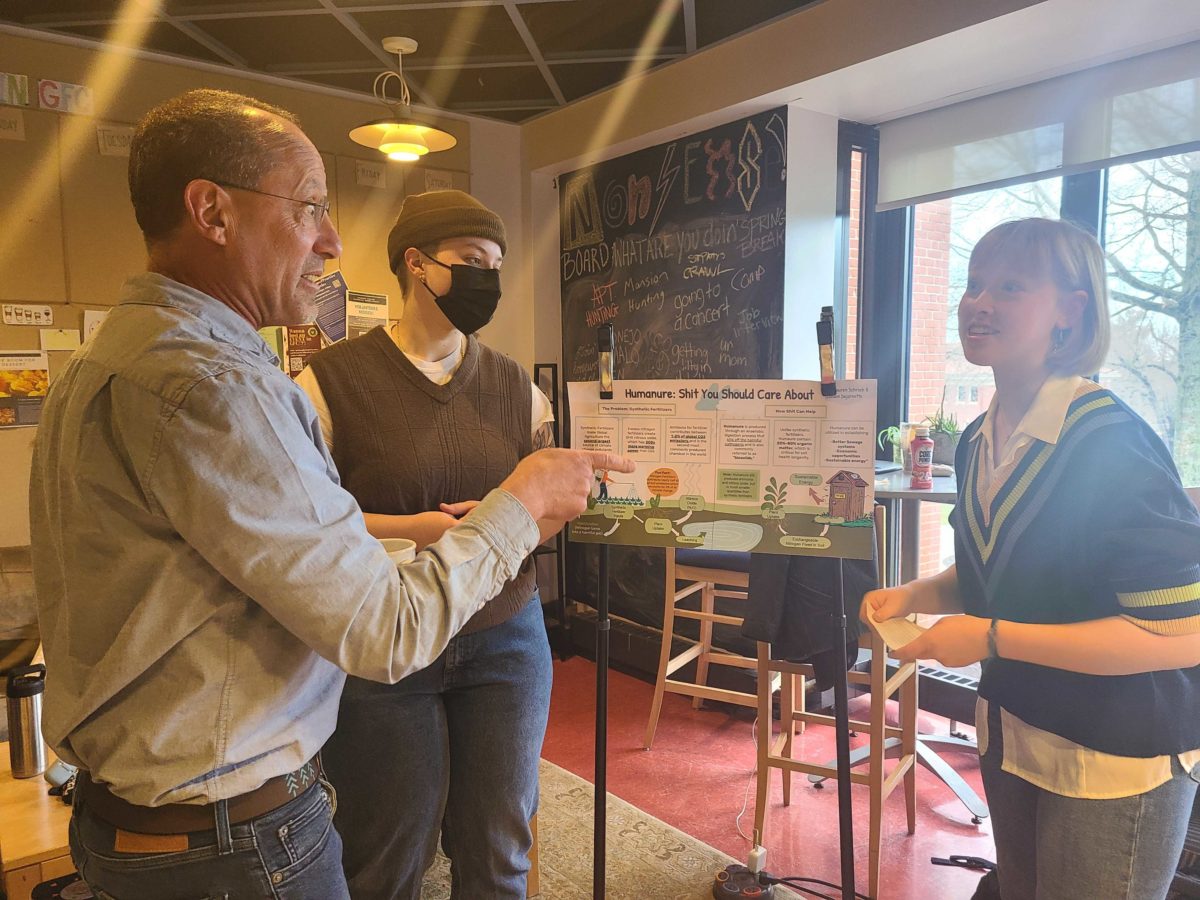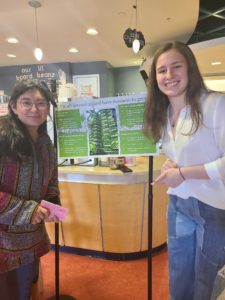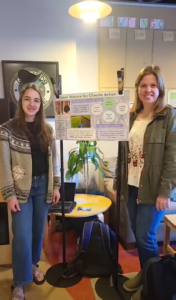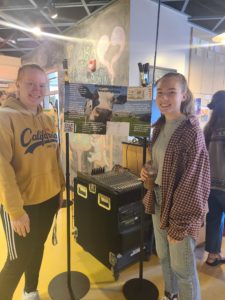
Soil to Plate: Students Present Sustainable Agricultural Research
Where does your food actually come from? First- and second-year environmental science and sustainability (ESS) students at Allegheny College wanted to know. But, even more, they wanted to understand how to make agriculture sustainable for all.
Those students — enrolled in the spring semester in the Soil to Plate: World Food and Agriculture course — invited the Allegheny community to listen to presentations on sustainable agriculture. Held in the Grounds for Change coffeehouse, the students’ presentations covered reducing nitrogen fertilizer use, curbing greenhouse gas emissions, improving soil health, and more.
Feedback from students and faculty was well received by the course instructor, Eric Pallant, Christine Scott Nelson ’73 Endowed Professor in Environmental Science & Sustainability.
“It exceeded my expectations at many levels because of the amazing turnout. People were so engaged with the research that students had done on individual posters,” Pallant says. “What I’m most encouraged about is these are first- and second-year students who have done research on how to combat climate change with very reasonable solutions.”

Nathalie Paz Saucedo, a first-year ESS student with a minor in mathematics, and Katya Pryshckenko, a fellow first-year ESS student with a minor in studio art, researched vertical agriculture. Both said that method is commonly used in cities or food deserts.
Saucedo and Pryshckenko explained that vertical agriculture maximizes nutrients and minimizes waste production. Nutrients run down a root system through available water. In turn, the process doesn’t require soil or the use of harmful chemicals.
“The idea is to bring in these spaces and educate people within these communities so they can slowly learn how to take care of these systems on their own to start giving fresh fruit and vegetables to the community,” Pryshckenko says, “especially in underserved and underprivileged communities to feed and educate themselves on agricultural values.”

First- and second-year ESS students Elizabeth Dyer and Ava Loch explored the idea of cover cropping. The pair explained that nitrogen fertilizer is expensive to make and is energy-intensive. Nitrogen fertilizer also creates nitrogen oxide, which is heat-trapping and contributes to greenhouse gases.
The students proposed that farmers could plant nitrogen-fixing plants like soybeans, alfalfa, or rye to attract nitrogen from the air that gets incorporated into the soil during the off-season.
“It’s pretty intuitive and super convenient. There are all kinds of benefits besides not having to use nitrogen fertilizer anymore,” Loch says. “It increases your soil bacteria, which is going to be good for any plant that you plant in the area. It improves the soil structure and increases the organic matter.”
Second-year ESS students Kari May and Haley Pageotte were intrigued by reducing meat consumption.

The two shared the detrimental effects of a high carbon footprint, inhumane farming practices, and nitrogen fertilizer use. They reasoned that the 33% of agricultural land solely used for livestock could be converted to produce more affordable food.
Pageotte and May were startled by how current research on the cow’s carbon footprint and nourishment was detached. They say that up-to-date research has not considered the carbon footprint of the cows’ food. Instead, it is recorded from the onset of the cow digesting their food. The two agree that the connection between food and animal cannot be overlooked.
Visit the Environmental Science & Sustainability Department website to learn more about student research opportunities.